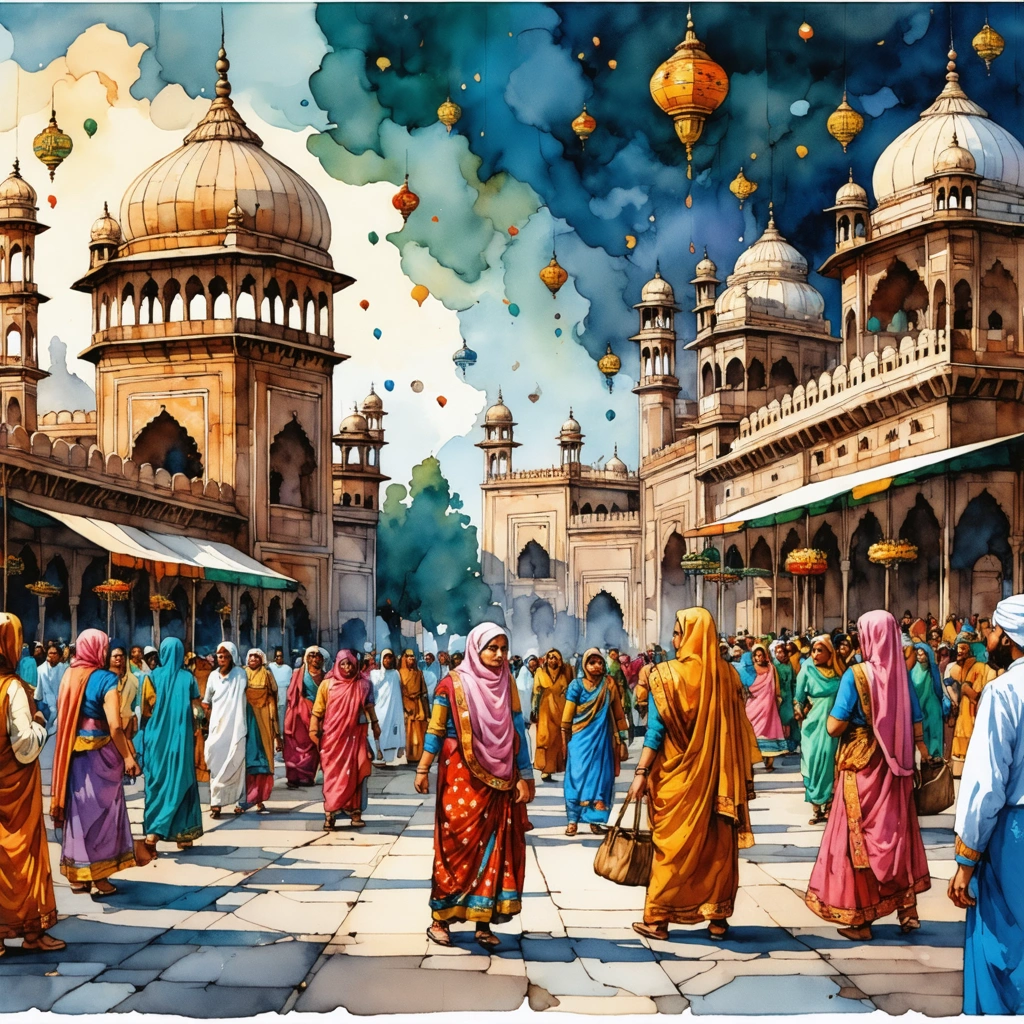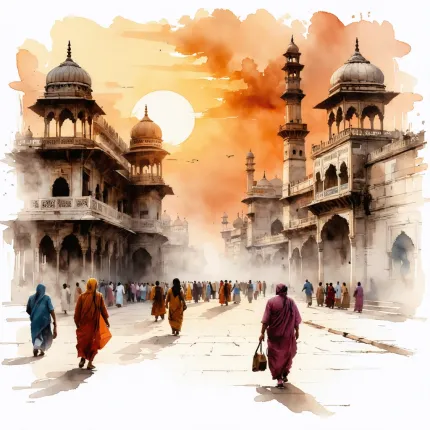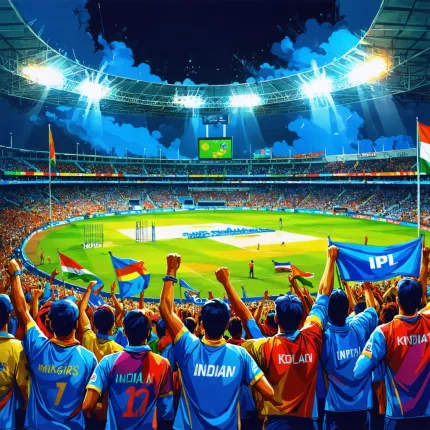
Imagine waking up one morning in India and wondering, "Aaj Kaun Sa Tyohar Hai Muslim Ka?" With a country as diverse as India, where every corner bursts with colors, traditions, and celebrations, Islamic festivals hold a unique place in the cultural mosaic. Yet, for many, the essence of these festivals remains a mystery, often reduced to just holidays or reasons for grand feasts. But there’s so much more to uncover about why these days are celebrated, especially in 2025, when the confluence of tradition and contemporary life offers a fresh perspective on these age-old festivities.
Why Do Islamic Festivals Matter in India?
India is home to the second-largest Muslim population in the world, and Islamic festivals are woven into the social fabric of millions. But here’s the catch: despite their prominence, a large part of the population is unclear about the deeper meanings behind these celebrations. For instance, when someone asks, "Eid Kyo Manaya Jata Hai?" it’s not just about marking the end of fasting or enjoying sweet treats. It’s about understanding faith, sacrifice, gratitude, and community bonding.
Similarly, the solemnity of Muharram is often overshadowed by the grandeur of other festivities. Many ask, "Muharram Kyo Manate Hai?" Yet, the historical significance and the spiritual lessons embedded in this month are profound, shaping the ethos of millions. Islamic festivals in India are not just religious observances; they are cultural phenomena that reflect centuries of history, art, and interfaith harmony.
The Challenge of Awareness and Appreciation
In today’s fast-paced world, where social media trends dominate and traditional knowledge sometimes slips through generational cracks, there’s a growing disconnect. People might know when Eid is, but not why it’s celebrated. They might witness the processions of Muharram, but miss their poignant narratives of sacrifice and resilience. This gap often leads to misconceptions, or worse, indifference.
For those genuinely curious—whether students, educators, or culturally sensitive travelers—the lack of accessible, engaging information can be frustrating. Questions like "Aaj Kaun Sa Tyohar Hai Muslim Ka?" become gateways to deeper cultural conversations but require clear, thoughtful answers.
What This Article Will Explore
This blog post aims to bridge that very gap by providing a comprehensive yet accessible guide to the significance of Islamic festivals in India for 2025. We will delve into the origins, cultural practices, and contemporary relevance of key festivals such as Eid and Muharram. Through this, readers will gain:
- An insightful understanding of Eid Kyo Manaya Jata Hai—beyond the celebrations, exploring its spiritual core and how it resonates in Indian society.
- Clarification on the observance of Muharram Kyo Manate Hai—unpacking its historical context, rituals, and emotional impact.
- A helpful resource for answering the everyday question, Aaj Kaun Sa Tyohar Hai Muslim Ka? with clarity and context, fostering greater cultural awareness.
By the end of this post, you’ll see these festivals not just as dates on a calendar but as living traditions that enrich India’s pluralistic identity. Whether you’re a student writing a report, a curious neighbor, or a professional engaging with diverse communities, understanding the “why” behind these festivals will add a meaningful layer to your knowledge.
So, if you’ve ever found yourself wondering what makes these Islamic celebrations so special in India, or if you’ve heard terms like Eid and Muharram and wished you knew more than just the basics, stay tuned. This journey through Islamic festivals will illuminate the celebrations’ profound significance and invite you to appreciate the vibrant heritage they represent.

Islamic Festivals in India: Understanding Their Significance for 2025
What Are the Major Islamic Festivals Celebrated in India?
India, with its diverse and vibrant cultural fabric, is home to a significant Muslim population that celebrates various Islamic festivals with great devotion and enthusiasm. The most prominent Islamic festivals in India include Eid-ul-Fitr, Eid-ul-Adha, Muharram, and Milad-un-Nabi. Each festival carries its own religious and cultural significance, reflecting centuries of tradition and communal harmony.
Why and How Is Eid Celebrated? – Eid Kyo Manaya Jata Hai
Eid is one of the most joyous occasions for Muslims worldwide, and in India, it is celebrated with immense fervor. The question "Eid Kyo Manaya Jata Hai?" translates to "Why is Eid celebrated?" which is fundamental to understanding the cultural importance of this festival.
There are two major Eids – Eid-ul-Fitr and Eid-ul-Adha. Eid-ul-Fitr marks the end of Ramadan, the holy month of fasting. It symbolizes self-discipline, spiritual reflection, and gratitude to Allah for the strength to complete the fast. Muslims come together for communal prayers, share festive meals, and give Zakat (charity) to the less fortunate, promoting social welfare and community bonding.
Eid-ul-Adha, also known as the Festival of Sacrifice, commemorates the willingness of Prophet Ibrahim (Abraham) to sacrifice his son as an act of obedience to God. This festival involves the sacrifice of an animal, usually a goat or sheep, with the meat distributed among family, friends, and the needy, emphasizing charity and sacrifice.
What Is the Significance of Muharram? – Muharram Kyo Manate Hai
The month of Muharram is highly significant in the Islamic calendar, especially the 10th day, known as Ashura. The query "Muharram Kyo Manate Hai?" or "Why is Muharram observed?" opens a window into deep historical and spiritual themes.
Muharram is observed as a period of mourning for the martyrdom of Imam Hussain, the grandson of Prophet Muhammad, at the Battle of Karbala in 680 AD. This event symbolizes the struggle against tyranny and injustice. In India, especially among Shia Muslims, Muharram is marked by processions, recitations of elegies, and community gatherings that reflect grief and reverence.
Sunni Muslims also observe Muharram by fasting on the 9th and 10th days, following the tradition of Prophet Muhammad. The festival fosters a sense of solidarity, remembrance, and moral reflection among the community.
How to Find Out Aaj Kaun Sa Tyohar Hai Muslim Ka (Which Muslim Festival Is Today?) in India?
Islamic festivals follow the lunar Hijri calendar, which differs from the Gregorian calendar. This means that the dates of these festivals shift approximately 10 to 12 days earlier each year. To answer the common question "Aaj Kaun Sa Tyohar Hai Muslim Ka?" or "Which Muslim festival is today?" there are several reliable methods to stay updated:
- Islamic Calendar Apps and Websites: Platforms like IslamicFinder, Muslim Pro, and local mosque websites in India provide daily updates on Islamic dates and festivals.
- Community Announcements: Mosques and Islamic centers often announce upcoming festivals and special prayers via social media or community boards.
- News Outlets: During major festivals like Eid or Muharram, Indian news channels and newspapers frequently publish schedules and coverage of events.
Keeping track of the Islamic calendar helps Muslims in India plan their religious observances, social gatherings, and charitable activities accordingly.
The Cultural and Social Impact of Islamic Festivals in India
Islamic festivals in India are not just religious events but also important cultural celebrations that promote unity and social cohesion. They bring people of various communities together, fostering mutual respect and understanding. For example:
- Interfaith Harmony: In many parts of India, people from different religions participate in Eid feasts or attend Muharram processions, highlighting shared values of compassion and peace.
- Economic Boost: Festivals encourage local markets, artisans, and food vendors, stimulating local economies especially in cities with large Muslim populations like Lucknow, Hyderabad, and Mumbai.
- Charity and Social Welfare: Festivals emphasize giving, with many Muslims in India engaging in Zakat and Sadaqah (voluntary charity), supporting the underprivileged.
Looking Ahead: Islamic Festivals in India in 2025
In 2025, the dates for major Islamic festivals in India will continue to follow the lunar calendar, with expected celebrations as follows (approximate Gregorian dates):
- Eid-ul-Fitr: Expected around March 29, 2025
- Hijri New Year (Muharram 1): Around July 7, 2025
- Ashura (10th Muharram): Around July 16, 2025
- Eid-ul-Adha: Expected around June 7, 2025
- Milad-un-Nabi (Prophet Muhammad’s Birthday): Expected around October 23, 2025
These dates help Muslims in India prepare spiritually and socially, ensuring that the festivals continue to be celebrated with the same zeal and reverence.
Conclusion
Understanding the significance of Islamic festivals in India requires appreciating their religious, cultural, and social dimensions. Queries like Eid Kyo Manaya Jata Hai, Muharram Kyo Manate Hai, and Aaj Kaun Sa Tyohar Hai Muslim Ka reflect a genuine interest in the reasons behind these celebrations and their timing.
As India moves towards 2025, the Islamic festivals will continue to be a cornerstone of Muslim identity and community life, fostering values of faith, charity, and unity across the nation.


